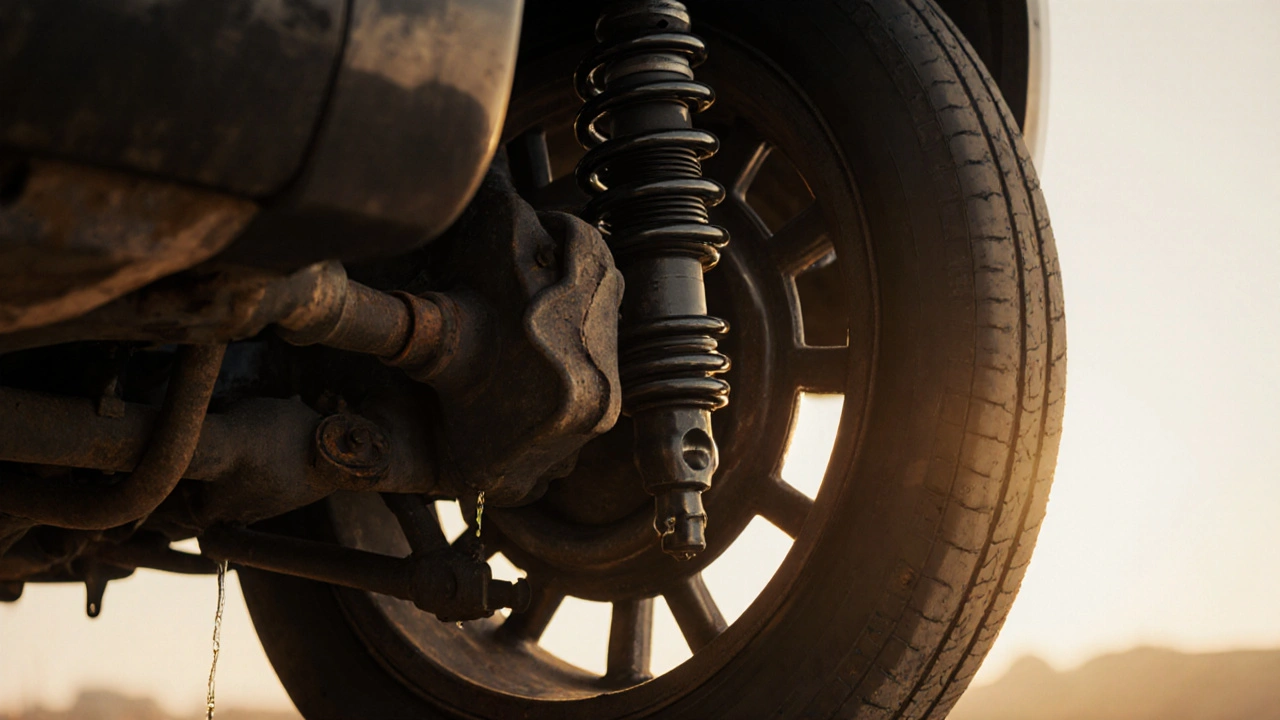When your car feels bouncy, noisy, or unstable over bumps, it’s often not just the tires—it’s the struts, a key part of the suspension system that combines shock absorbers and spring supports into one unit. Also known as strut assemblies, they’re critical for keeping your tires on the road, especially when turning or braking. Unlike simple shock absorbers, struts are structural components that support the weight of your vehicle. When they wear out, your car doesn’t just ride poorly—it becomes harder to control, tires wear unevenly, and braking distances grow longer.
Most drivers don’t think about struts until something feels off. But worn struts show up in clear ways: your car noses down when you brake, it leans too much in turns, or you hear clunking over speed bumps. You might also notice uneven tire wear, like bald spots on the inside or outside edges. These aren’t just cosmetic issues—they’re safety risks. A 2018 study by the National Highway Traffic Safety Administration found that vehicles with failed suspension components were significantly more likely to lose control in emergency maneuvers. Replacing struts isn’t about comfort alone; it’s about keeping you in control when it matters most.
Struts don’t have a set replacement schedule like oil changes. They wear based on road conditions, driving habits, and climate. If you drive mostly on rough roads, hit potholes often, or live in a snowy area with road salt, your struts may need replacing by 80,000 miles. On smooth highways, they might last 100,000 or more. But if you’re unsure, a simple bounce test helps: push down hard on each corner of the car. If it bounces more than once or twice, the struts are likely worn out. And if you’ve had a front-end collision or hit a curb hard, get them checked—even if nothing seems broken.
When you replace struts, you’re not just swapping parts. You’re restoring the balance of your entire suspension system, the network of springs, shocks, control arms, and bushings that absorb road impacts and keep your wheels aligned. A bad strut puts extra stress on other parts—ball joints, tires, even steering components. That’s why mechanics often recommend replacing struts in pairs and checking related parts during the job. And while you’re at it, consider a wheel alignment afterward. New struts change the geometry of your suspension, and without proper alignment, your tires will wear out faster than ever.
Some drivers try to save money by replacing just the shocks and keeping the old springs. That’s a mistake. Struts are designed as complete units. Mixing old and new parts creates uneven performance and can lead to premature failure. You also need to know if your car uses strut cartridges (which can be replaced without removing the whole assembly) or full strut assemblies (which require more labor). Most 2018 models use full assemblies, making professional installation the smarter choice for most people.
After replacement, your car will feel different—quieter, more planted, and more responsive. You’ll notice better braking, less body roll, and fewer vibrations through the steering wheel. It’s not a performance upgrade like a new engine, but it’s one of the most impactful repairs you can make for everyday safety and confidence behind the wheel.
Below, you’ll find real-world guides on diagnosing suspension problems, comparing strut brands, understanding what’s included in a full replacement, and how to avoid being upsold on unnecessary parts. Whether you’re planning to do it yourself or just want to know what to expect at the shop, these posts give you the facts without the fluff.
Posted by
Liana Harrow
14 Comments

Learn how springs, shocks, and struts work together to keep your car stable and safe. Discover signs of wear, when to replace them, and how to save money with proper maintenance.
read morePosted by
Liana Harrow
12 Comments

Learn how to spot worn suspension parts-springs, shocks, and struts-and when to replace them for safety and better handling. Real costs, signs of failure, and trusted brands for UK drivers.
read more